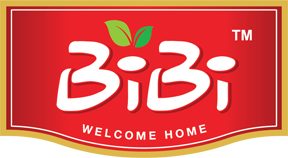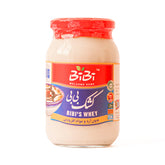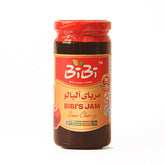The Art of Making Authentic Baklava: Tips and Traditions
Introduction:
Baklava, a layered pastry dessert soaked in syrup and filled with nuts, is a jewel in the crown of Middle Eastern desserts. This sweet delicacy is not just a treat; it's a symbol of tradition and craftsmanship. In this blog, we'll dive into the art of making authentic baklava, offering tips and shedding light on the rich traditions that surround this beloved dessert. For those who crave the authentic taste without the effort of making it from scratch, BiBi Food offers an exquisite selection of Baklava, available here.
The Origins and Spread of Baklava:
Baklava's origins are a tapestry of Middle Eastern, Mediterranean, and Central Asian influences. This sweet pastry has been embraced and adapted by various cultures, each adding its unique twist to the recipe. The result is a dessert that is celebrated across the world, with each region boasting its version of baklava.
Ingredients: The Foundation of Authentic Baklava:
- Phyllo Dough: The base of baklava, phyllo dough, should be thin and pliable.
- Nuts: Typically, baklava is filled with walnuts, pistachios, or almonds.
- Syrup: A mixture of sugar, water, and often honey or rosewater, adds sweetness and binds the layers together.
- Butter: Clarified butter is brushed between the layers of phyllo, giving baklava its rich flavor and crisp texture.
The Art of Layering:
Creating baklava is a labor of love, involving careful layering of phyllo dough and nut mixture. Each layer is brushed with butter, and the top is cut into diamonds or squares before baking. The key is to achieve a balance where the pastry is crisp but not dry, and the syrup is ample but not overpowering.
Regional Variations:
- Turkish Baklava: Often uses pistachios and is less sweet than other versions.
- Greek Baklava: Typically includes a hint of cinnamon and cloves in the nut mixture.
- Persian Baklava: Known for its inclusion of rosewater and cardamom in the syrup.
Baking Tips for Perfect Baklava:
- Phyllo Dough: Keep the phyllo dough covered with a damp cloth to prevent drying out.
- Buttering: Use a pastry brush for even application of butter.
- Cutting: Cut the baklava before baking to make serving easier and allow the syrup to seep through the layers.
- Syrup: Pour the syrup over the baklava as soon as it comes out of the oven for maximum absorption.

Serving and Storing Baklava:
Baklava is best served at room temperature. It can be stored in an airtight container to retain its crispness. Typically, it lasts well for about a week, making it an excellent choice for gatherings and celebrations.
Enjoying Baklava from BiBi Food:
For those who love the taste but not the hassle of making baklava, BiBi Food offers a delicious selection of ready-made Baklava. Our baklava is made following traditional recipes and methods, ensuring an authentic taste experience. Explore our selection here and enjoy the rich, sweet flavors of this timeless dessert.
Conclusion:
Baklava is more than just a dessert; it's a celebration of cultural diversity and culinary artistry. Whether you're a seasoned baker or a curious foodie, the journey of making and enjoying baklava is an enriching experience. At BiBi Food, we take pride in offering authentic baklava that honors the traditions and flavors of this exquisite dessert. We invite you to indulge in this sweet adventure and share in the joy of baklava with your friends and family.





